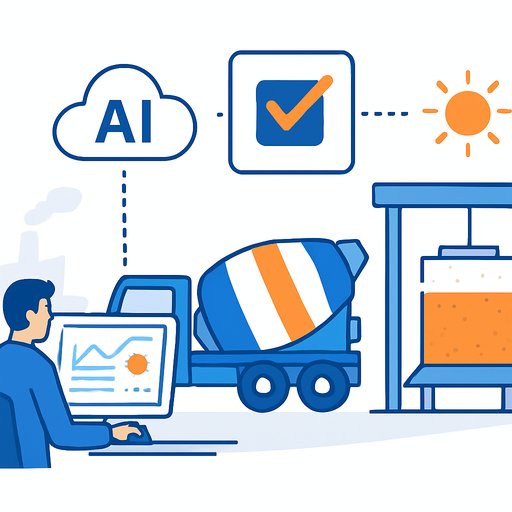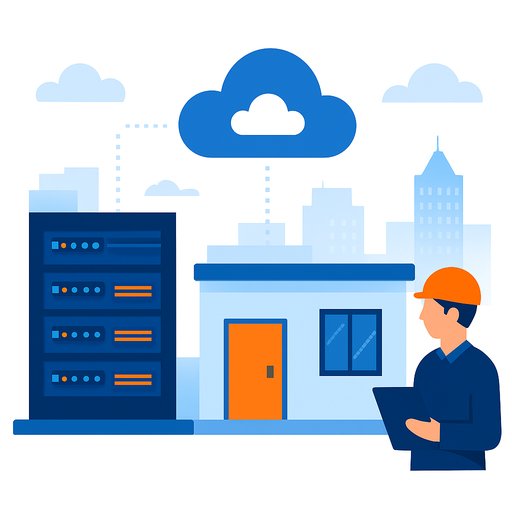AI's Next Bottleneck: Electricity, Sites, and the New Rules for Data Center Development
The future of AI isn't just about chips and models. It's about dirt, steel, and electrons. Demand for AI-grade data centers is colliding with a hard limit: access to reliable, scalable electricity.
As explained by Alex Ramirez, Senior Managing Director and Lead Data Center Banker at Guggenheim Securities, vacancy across North America is under 3%, and in tier-1 markets it's under 1%. That's not a healthy signal-it's a choke point forming at the foundation of the digital economy.
The electricity wall is here
The main constraint isn't land or concrete. It's energy. Ramirez's team estimates the supply-demand gap could hit up to 10 gigawatts by 2030. That's a shortfall big enough to delay entire AI buildouts.
New grid capacity often requires five to seven years. Even aggressive planning today won't deliver electrons fast enough for the next wave of AI workloads. Meanwhile, utilities are shifting risk to developers by asking for deposits on turbines and other long-lead equipment.
Historically, data centers used around 2-3% of total electricity. With AI, that share could quadruple to 10-12% over the next several years. Electric grids, incentives, and procurement models will adjust accordingly.
What this means for real estate and construction
The development playbook is changing. Site selection now starts with energy availability and interconnection strategy, then fiber, then everything else. If you can't secure electrons, you don't have a project.
Site selection: follow electrons, then fiber
- Prioritize proximity to high-voltage transmission (230-345 kV) and substations. Validate deliverable MVA, not just nameplate ratings. Check queue positions and realistic in-service dates.
- Target brownfield industrial sites with existing interconnects, retired generation, or permitted corridors. These can cut years off schedules.
- Expect multi-year timelines for large transformers, switchgear, and generators. Place orders early, prepay where required, and consider pooled procurement across projects.
- Plan for "behind-the-meter" options: on-site generation, storage, and microgrids. Evaluate nuclear (including SMR pilots), solar plus storage, and high-efficiency gas as bridging assets where policy allows.
- Structure PPA contracts to hedge volatility and match staged load ramps. Blend utility supply with on-site generation to smooth delivery schedules.
- Design for thermal realities: water rights, discharge permits, and cooling methods (air, liquid, hybrid). Heat reuse can unlock community approvals and new revenue streams.
Construction: build for staged energy delivery
- Phase projects to align with incremental energization (5 MW, 10 MW, 20 MW blocks). Shell early, fit-out later as capacity comes online.
- Standardize electrical rooms and yard layouts for quick replication across sites and regions.
- Engineer flexibility for higher rack densities, liquid cooling retrofits, and new energy sources without rework.
- Integrate utility coordination into the critical path. Treat interconnection studies, easements, and substation builds as top-tier milestones.
Capital and contracts: new risk-sharing norms
- Utilities increasingly require deposits for turbines and long-lead gear. Expect more take-or-pay and capacity reservation structures.
- Developers should budget for carrying costs tied to energy delivery dates and consider escrow mechanisms for schedule risk.
- Lenders will underwrite around interconnection certainty. Early, binding commitments on capacity and delivery timing will lower your cost of capital.
Geography is shifting
Tier-1 markets are tapped. Expect growth in nontraditional regions where large blocks of electricity are accessible or expandable. Meta's multi-billion dollar build in Louisiana is a clear example of this trend.
Collaboration among tech buyers, utilities, and developers is accelerating. Expect more joint deals around "behind-the-meter" assets and long-horizon energy strategies spanning fossil bridging, renewables, and future nuclear.
What AI buyers will ask you (and how to be ready)
- How much firm capacity is contracted, and when does each block energize?
- What's the interconnection queue status, and who owns the critical path tasks?
- What are the contingency plans if grid delivery slips six to twelve months?
- Can the site support liquid cooling and rack densities north of 30-50 kW?
- What's the long-term energy mix and emissions profile, and how is it verified?
Practical actions to take now
- Build a "site viability" scorecard anchored to energy: deliverable MVA, queue position, substation upgrades, transformer lead times, water availability, and cooling options.
- Lock in equipment early. Diversify suppliers for transformers, switchgear, and generators to absorb shocks.
- Stand up a utility relations function. Weekly cadence on studies, permits, and land rights reduces surprises.
- Develop a playbook for on-site generation and storage, including emissions, noise, and community engagement plans.
- Design shells that can pivot: air to liquid cooling, density increases, and modular yard expansions without major rework.
The bottom line
The era of cheap, abundant data center electricity is ending. Energy strategy is now as critical as compute. For builders, owners, and EPCs, the winners will be those who secure electrons early, design for staged delivery, and turn grid constraints into a competitive edge.
For broader context on data center energy trends, see the International Energy Agency's analysis on data centers and network electricity use: IEA: Data centres and data transmission networks.
If your team needs a fast primer on AI workloads to better forecast electrical and thermal requirements, browse these resources: AI courses by job.
Your membership also unlocks:






